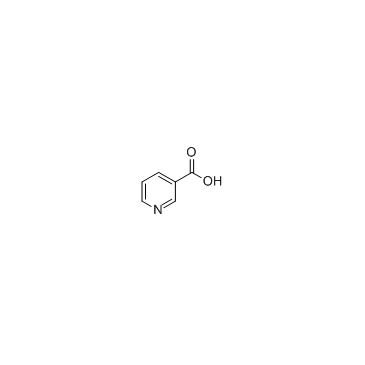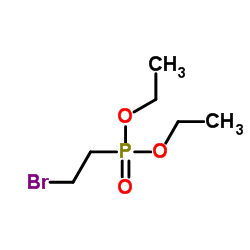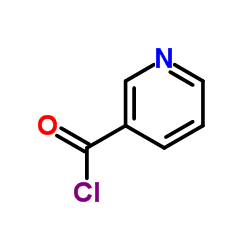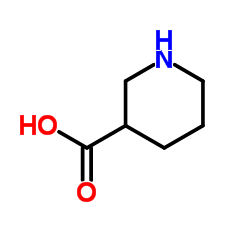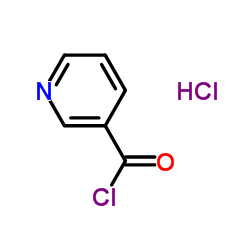636-79-3
| Name | pyridine-3-carboxylic acid,hydrochloride |
|---|---|
| Synonyms |
chloro nicotinic acid
Nicotinic acid,hydrochloride 3-carboxypyridinium chloride pyridine-3-carboxylic chloride Niacin hydrochloride Niacin HCl 3-Pyridinecarboxylic acid,hydrochloride Pyridine-3-carboxylic acid hydrochloride |
| Description | Niacin (Vitamin B3; Nicotinic acid) hydrochloride is an orally active B3 vitamin that is an essential nutrient for humans. Niacin hydrochloride plays a key role in energy metabolism, cell signaling cascades regulating gene expression and apoptosis. Niacin hydrochloride is also used in the study of cardiovascular diseases[1][2]. |
|---|---|
| Related Catalog | |
| Target |
Microbial Metabolite |
| In Vitro | Niacin hydrochloride (0-900 μM, 42 hours) significantly increases GSH levels and decreases ROS levels, and affects the expression of genes related to apoptosis and lipid metabolism[1]. Niacin hydrochloride (0-40 μM, 24 hours) can inhibit cancer invasive activity at low dose but with no influence on proliferation[2]. RT-PCR[1] Cell Line: Cumulus cells and oocytes of prepubertal gilts Concentration: 600 μM Incubation Time: 42 hours Result: Up-regulated the relative expression of the anti-apoptotic gene BCL2 and lipid metabolism gene ACACA while down-regulated the pro-apoptotic gene BAX. Cell Proliferation Assay[2] Cell Line: Rat ascites hepatoma cell line of AH109A Concentration: 0-40 μM Incubation Time: 24 hours Result: Had no effect on the proliferation of AH109A cells but suppressed cell invasion from 2.5 μM to 40 μM. |
| In Vivo | Niacin hydrochloride (subcutaneous injection, 3-300 mg/kg, once) can induce vasodilation in a dose-dependent manner within minutes in male C57BL/6 mice[3]. Animal Model: Male C57BL/6 mice[3] Dosage: 3-300 mg/kg Administration: Subcutaneous injection; once Result: Induced vasodilation in a dose-dependent manner. |
| References |
| Boiling Point | 292.5ºC at 760 mmHg |
|---|---|
| Melting Point | 236.6ºC |
| Molecular Formula | C6H6ClNO2 |
| Molecular Weight | 159.57000 |
| Flash Point | 130.7ºC |
| Exact Mass | 159.00900 |
| PSA | 50.19000 |
| LogP | 1.58180 |
|
~0% 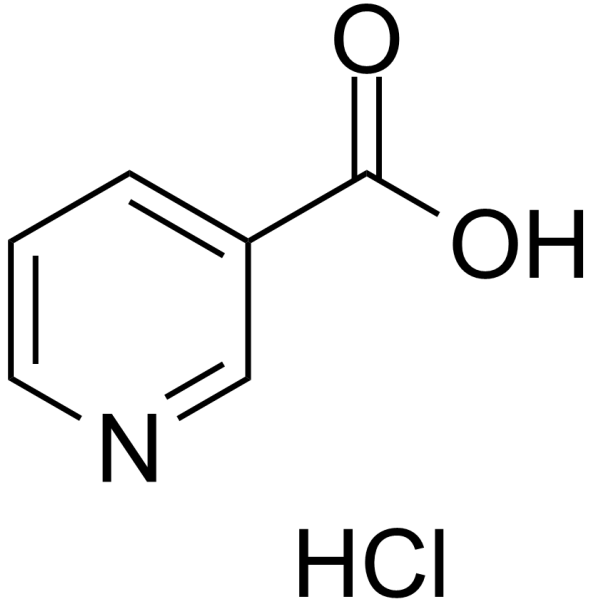
636-79-3 |
| Literature: Costantino, Ferdinando; Sassi, Paola; Geppi, Marco; Taddei, Marco Crystal Growth and Design, 2012 , vol. 12, # 11 p. 5462 - 5470 |
|
~% 
636-79-3 |
| Literature: Arai, Kunizo; Shimizu, Sakae; Yamamoto, Yuzuru Chemical & Pharmaceutical Bulletin, 1981 , vol. 29, # 4 p. 1005 - 1012 |
|
~% 
636-79-3 |
| Literature: Arai, Kunizo; Shimizu, Sakae; Yamamoto, Yuzuru Chemical & Pharmaceutical Bulletin, 1981 , vol. 29, # 4 p. 1005 - 1012 |
| Precursor 3 | |
|---|---|
| DownStream 2 | |
